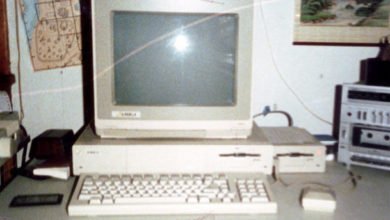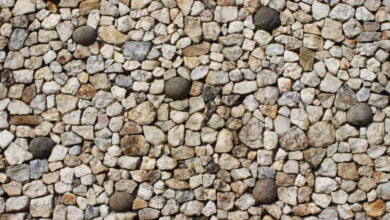
Your bananas are irradiated.
Don’t worry; they’re perfectly safe. But the average banana contains at least 0.1 micro sieverts (0.1 μSv) of radiation. Not enough to harm anyone, no, but it’s something.
In fact, this is what’s known as the Banana Equivalent Dose, or the amount of radiation exposure you’ll receive from eating that singular banana up there.
It’s due to the naturally-occurring radioactive isotope potassium-40, which in fact has a half-life of 1.25 billion years, contained in each and every banana you’ve ever eaten.
As Wikipedia states:
“Although the amount in a single banana is small in environmental and medical terms, the radioactivity from a truckload of bananas is capable of causing a false alarm when passed through a Radiation Portal Monitor used to detect possible smuggling of nuclear material at U.S. ports.”
That’s the funny thing about radiation, if there is a funny thing. It’s everywhere. And after years of witnessing the horrors of nuclear meltdowns, criticality accidents, and atomic bombs, I don’t blame anyone for being terrified just by hearing the word.
If the conditions are wrong, it can be very scary stuff.
But like I said, it’s everywhere. It’s a part of our natural world, a part of the environment that humans have thrived in for hundreds of thousands of years.
The human body has learned to cope, and in some instances thrive, when exposed to natural levels of radiation. Cosmic rays, ultraviolet rays. Potatoes, sunflower seeds, and Brazil nuts. Airplanes and cigarettes and dental X-rays. The human body, even. We’re surrounded by radiation.
The dose makes the poison, as Paracelsus would say.
Have A Banana!
That’s not to say I think we should be playing with it the way we sometimes do; ask me to go near a pile of radioactive waste and I’d kindly say no. But it’s interesting to put things into perspective.
In fact, here’s a chart I’ve always found fascinating, which compares a variety of radiation sources and their respective levels. You’d be surprised by the amount of radiation some sources put out compared to others. (This chart is courtesy Randall Munroe, by the way, creator of the always-awesome web comic XKCD, and here are his sources.)
Click the image to see it full-size:
Attack of the Killer Bananas
The thing to remember about the Banana Equivalent Dose — and one of the reasons it’s not really used in any meaningful way when comparing radiation exposures — is that different radioactive isotopes act in different ways, and can affect the human body in different ways.
Potassium-40, for example, is distributed evenly throughout the body when eaten, and any excess amounts are discarded. Compare this to something like Iodine-131, which tends to concentrate in the thyroid, and you can see why the Banana Equivalent Dose isn’t necessarily a good gauge for measuring exposures.
It is, however, an interesting tool when attempting to convey the reality of radiation in our natural environment.






